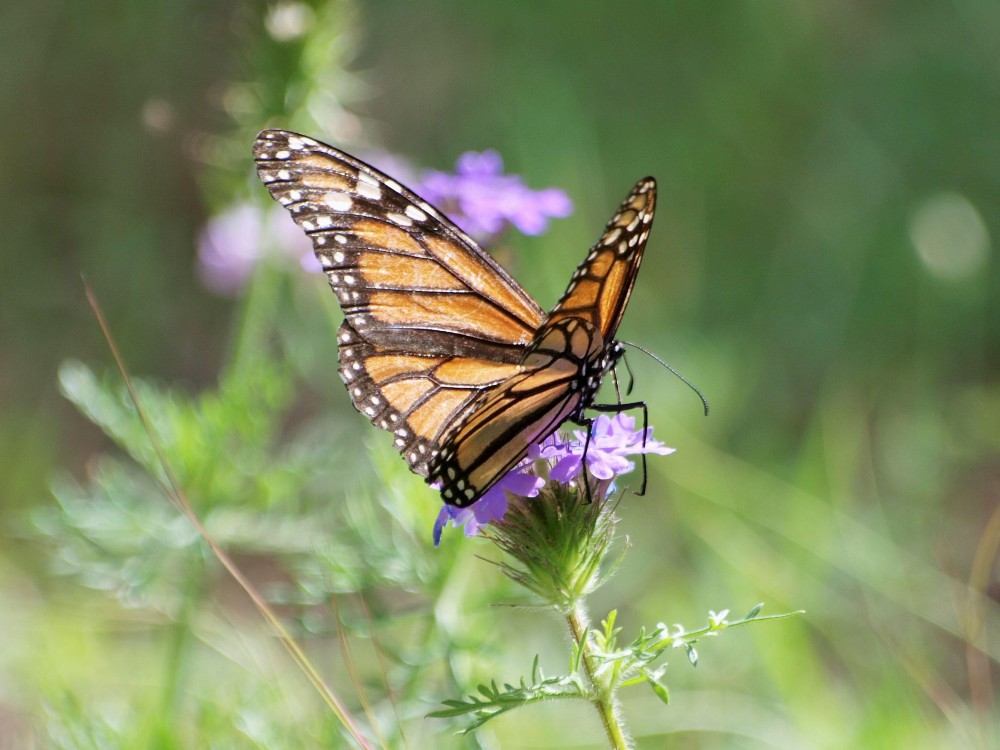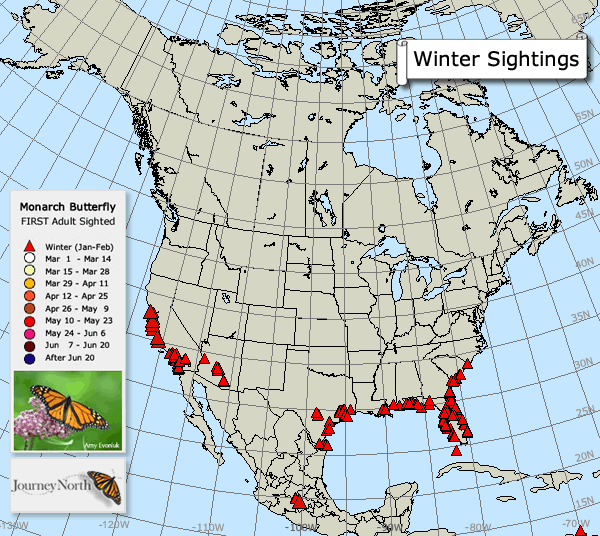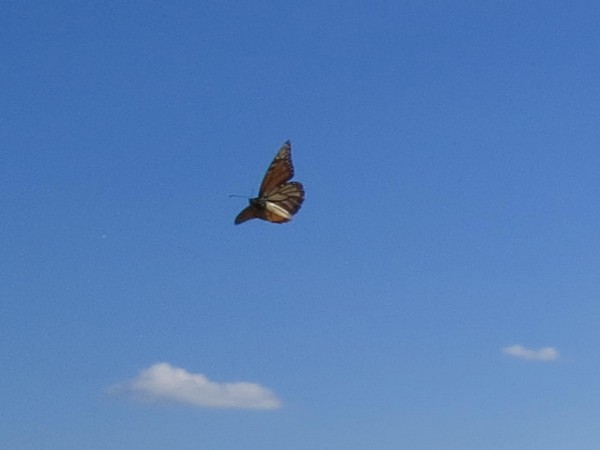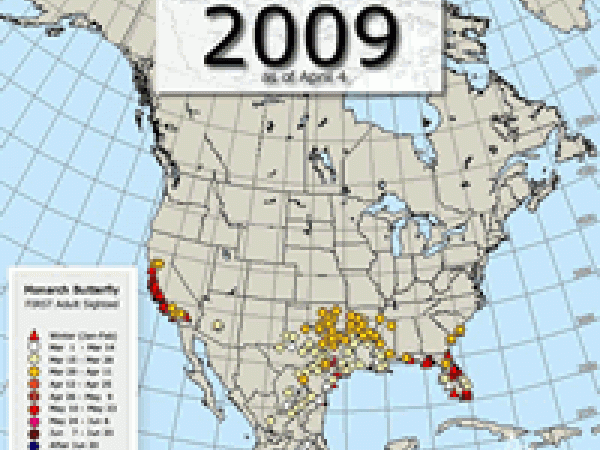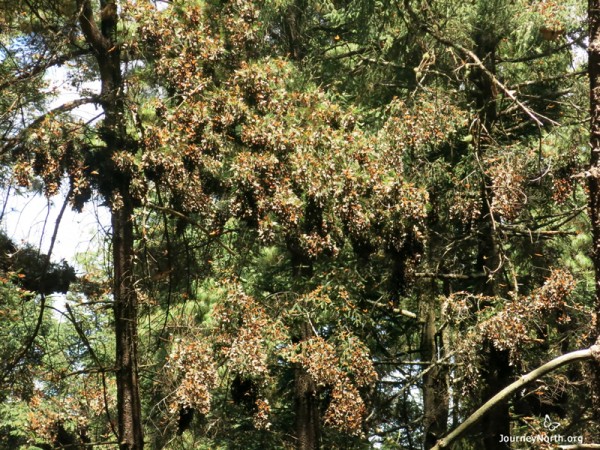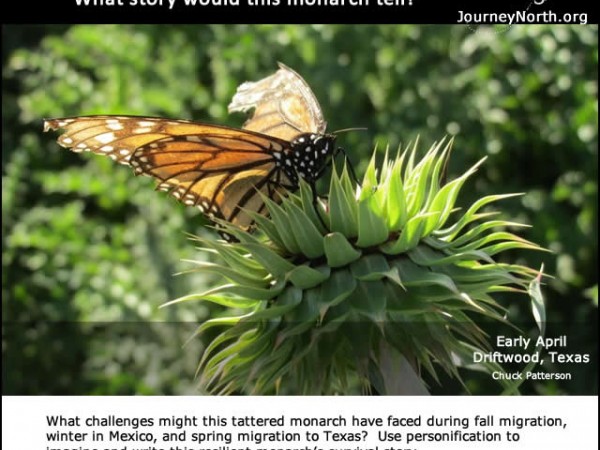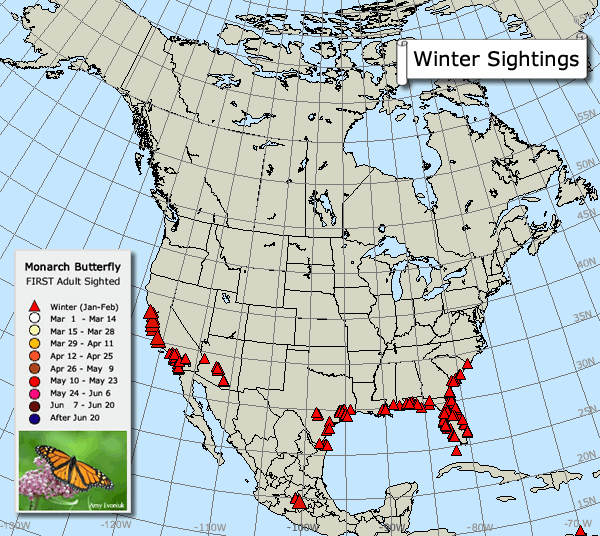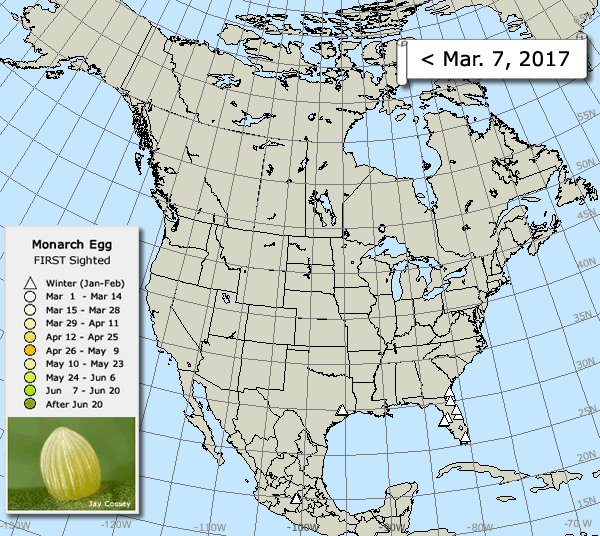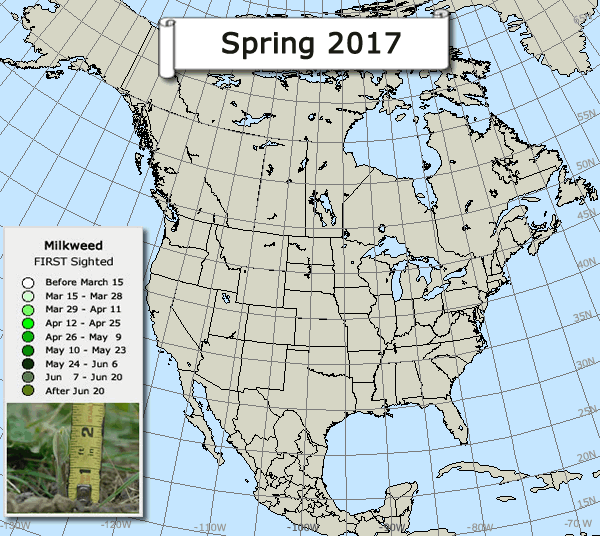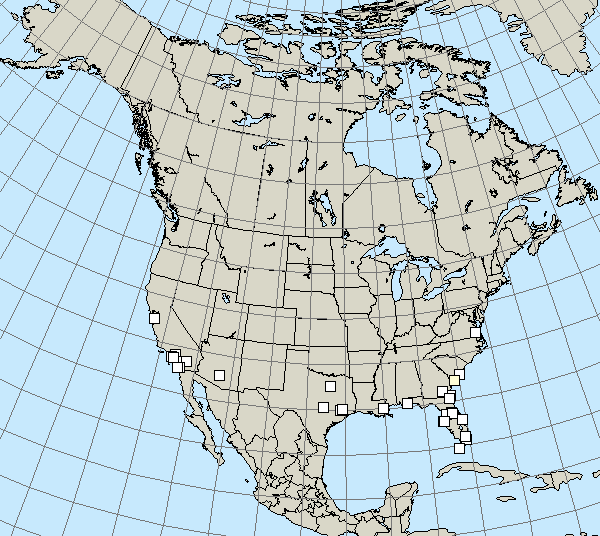A Steady Advance
Drifting across the landscape — with frequent stops to sip nectar, lay an egg, or find a mate — monarchs are steadily advancing northward.
Four New States
The migration's leading edge has now expanded into four new states, Mississippi, Kansas, Tennessee, and Missouri. The northernmost monarch was reported from St. Louis:
"I have never observed a monarch in the spring, much less this early," reported Sherri, who observed the butterfly carefully to rule out other look-alike species.
Rate of Advance
After this spring's dramatic entry into Texas and northward advance of 300 miles in a one week, the migration has settled down to a consistent 100 miles per week.
Take a look at these maps to for a year-to-year comparison. For butterflies that only live a few weeks in the spring, the rate and extent of advancement into the northern breeding grounds matter. When the migration advance slowly, the population is concentrated in warm southern regions:
- The eggs, larvae, and adult monarchs are safer from cold and freezing temperatures.
- The next generation can complete the life cycle more quickly where temperatures are warm.
More Monarchs to Come!
Estela reports that a substantial number of monarchs remained at Sierra Chincua on April 1st but that El Rosario had been vacated by April 3rd. She encountered four children, Lupita, Susana, Mario and Mauricio, who said:
“Estelita! It is now really over, now to wait for them for the next 8 months! They change our life so when they are here! Why do they have to leave? Our warm days hardly last two months and they could stay cool here in our forests and have something to eat if our parents would plant milkweed here! We could help them! Why isn’t that possible?"

